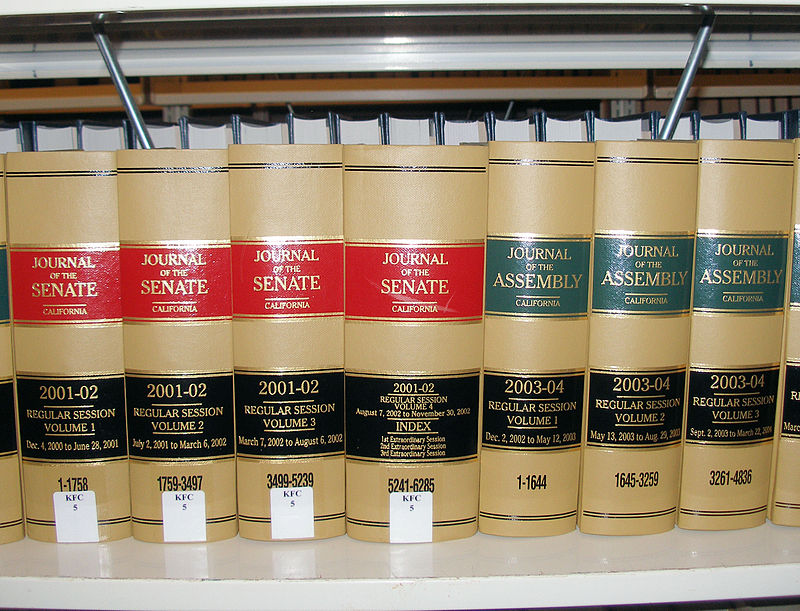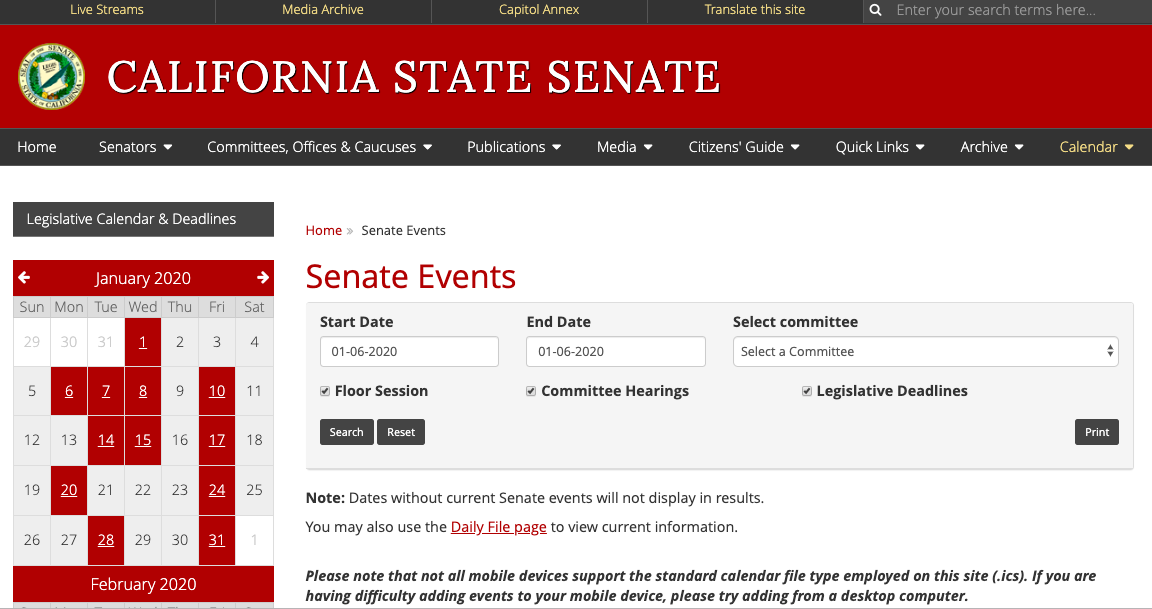
Journals of the California Legislature. (Photo: Wikipedia)
Does Legislative Intent Language Trump Statutory Language?
The Legislature has enacted legislative findings and declarations inconsistent with what the bill actually changed
By Chris Micheli, October 12, 2020 6:18 am
As we examine instances where a bill in the California Legislature contains both statutory changes (by amending, adding or repealing code sections) and legislative intent statements (usually in the form of findings and declarations), we expect these two types of provisions to coincide with each other and to be consistent.
With a well-drafted bill, it may not be necessary for a court to resort to those legislative findings and declarations to ascertain legislative intent because the language of the statute is clear. Even in such an instance, it might be additional assurance to the legislative branch that the judicial branch will interpret the statute in the manner desired by the legislature.
This conclusion would seem obvious to both bill drafters and observers alike. However, what happens if the statutory language does not comport with the legislative findings and declarations, or vice versa? How should a court treat that occurrence?
By way of background, there is a presumption that a statutory amendment was intended to change the meaning of the statute only when there is a material change contained in the language of the amended act. Dalton v. Baldwin (1944) 64 Cal.App.2nd 259. In other words, a statute can only be changed by a material amendment to the statutory language itself, but certainly not by mere “legislative intent” language. At least one would hope that is the case.
However, there are documented instances where the Legislature has enacted legislative findings and declarations that are inconsistent with what the bill actually changed or did not change in the codes. For example, if the proposed statutory changes were taken out of the bill, but the legislative findings and declarations remained, and were subsequently enacted as “uncodified” language, what should a court do?
It would make sense for a court to not rely upon the intent language, but rather to determine whether the underlying statute was actually changed and give effect to those changes. In other words, if the Legislature intends to change the law (i.e., a statute), then it must do so by enacting a bill that adds and amends sections in a code.
In most instances, courts have ruled, for example, that the amendment of a statute is evidence of an intention to change the rule stated by the court in applying its provisions. Butcher v. Brouwer (1942) 21 Cal.2nd 354. And, the fact that a lawmaking body knew decisions of appellate courts and made a substantial change in phraseology of a subdivision of the statute indicated an intention to effect a change of its meaning. Thomas v. Driscoll (1940) 42 Cal.App.2nd 23. In both of cases, there were changes made to the statute.
In this regard, there is no need for “intent” language to be considered by the courts unless there is some ambiguity in the statutory language because the purpose of legislative intent is to provide clarity regarding legislative ambiguity. However, “if there is no ambiguity in the language, we presume the Legislature meant what it said and the plain meaning of the statute governs.” Diamond Multimedia Systems, Inc. v. Superior Court (1999) 19 Cal.4th 1036, 1046–1047. As stated by Justice Scalia, “We are governed by laws, not by the intentions of legislators.” Conroy v. Aniskoff (1993) 507 U.S. 511, 519.
As a result, a logical conclusion would be that legislative intent language cannot “trump” statutory language, particularly in a case where no changes were made to a statute. Nonetheless, that has not always been the case and some have advocated that courts accept a legislative determination with intent language should equate to a statutory change.
- Pilotage Rates in California - December 16, 2025
- Partition of Property in California - December 15, 2025
- Relief from Child Support Orders - December 14, 2025




